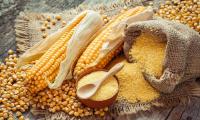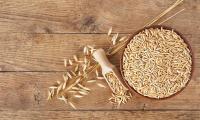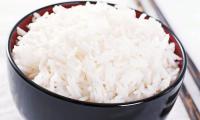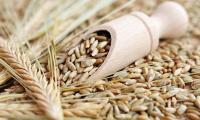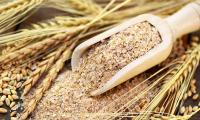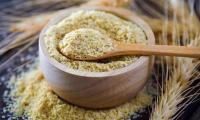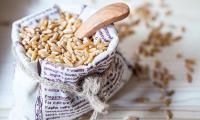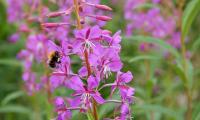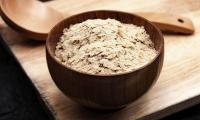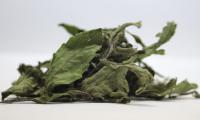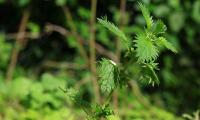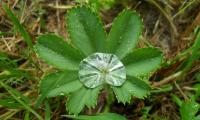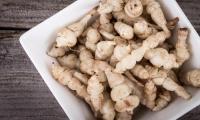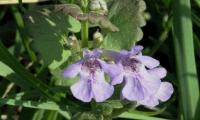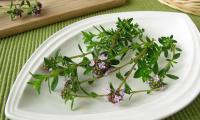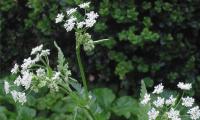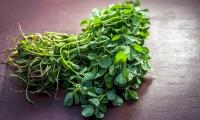Ingredients
Corn semolina, whole grain (raw?, organic?)
Whole grain corn semolina is gluten-free. It is made from dried, coarsely ground corn kernels (raw?) and used for cooking or baking. Organic? 87/09/04
Oats (seed oats, real oats, raw? organic?)
The well-known grain oats are actually called seed oats or real oats. The grain is rich in vitamins, minerals and fiber. Raw? Organic? 74/19/08
Sticky rice, white (raw, organic?)
White sticky rice is peeled rice (raw, organic?) from Southeast Asia that tastes sweet when cooked. The sticky consistency is achieved by steaming it properly. 92/08/01
Rye (rye grains, raw, organic?)
Rye is a grain with a high content of nutrients and fiber. Rye grains (raw, organic?) are ideal for baking wholemeal mixed breads. 86/12/02
Wheat bran, raw (organic?)
Wheat bran (raw) remains as a byproduct of flour production. Bran (organic?) is rich in nutrients and supports the intestines in case of digestive problems. 77/18/05
Wheat germ (raw?, organic?)
Wheat germ is the part of the wheat grain that is richest in vitamins and minerals. It is sold organically, but not raw, but thermally treated (heated). 61/27/11
Kamut or Khorasan wheat, raw (organic?)
Kamut or Khorasan wheat (raw) is an ancient type of grain. It is a relative of today's wheat, but larger, not as overbred and mostly organic. 81/17/02
Narrow-leaved willowherb (fireweed, organic?)
The narrow-leaved willowherb has many names, including fireweed. The leaves, roots, flowers and stems of the wild plant (organic?) can be eaten raw. 62/30/08
Brewer's yeast (organic?)
Brewer's yeast has a spicy, slightly cheese-like taste. It is therefore used for seasoning or as a cheese substitute in dishes. Arguments for organic. 44/52/05
Stevia, dried leaves (raw?, organic?)
Dried leaves of stevia contain the sweetener stevioside and are many times sweeter than beet sugar, but are tooth-friendly and calorie-free. 84/12/04
Common comfrey (Wallwort)
The common comfrey, also known as comfrey, is hardly used anymore as a food plant, but rather for external applications. 00/00/00
Nettle, small, raw (stinging nettle, organic?)
The small stinging nettle (stinging nettle) is rich in vitamin C when raw. It is rarer than the large stinging nettle. Organic quality? 43/52/06
Lady's mantle, pointed-lobed
The common lady’s mantle (Alchemilla vulgaris) has a recognized medicinal effect on diarrhea, gastrointestinal and menstrual problems. 00/00/00
Tuberous Woundwort, Stachys affinis (Japanese potato)
Tuberous beetroot (Stachys affinis), also known as Chinese artichoke, Japanese potato or simply stachys, is considered a rare specialty. 00/00/00
Ground ivy (Ground ivy, Ground ivy)
Ground ivy is known as ground ivy, ground ivy and ground ivy. The inconspicuous wild plant is used as a spice plant because of its essential oils. 00/00/00
Winter savory, raw (organic?)
In contrast to summer savory, raw winter savory is spicy and hot with digestive and appetite-stimulating properties. Organic? 81/10/09
Cow parsley, raw (organic?)
Raw cow parsley gives soups, salads and pickles a spring-like aroma. There is a risk of confusion with highly poisonous plants. Organic? 67/29/04
Viper's Bugloss (Echium)
The viper's bugloss (Echium) has bristly hairs and is rich in unsaturated fatty acids. We advise against eating it as it is potentially harmful to health. 00/00/00
Bladderwrack, raw (organic?)
Bladderwrack (raw), a brown algae, is widely used. The algae has been known as a medicinal remedy for centuries. It has a high iodine content. Organic? 81/14/05
Fenugreek leaves, raw (methi, organic?)
Fresh fenugreek leaves (methi, cow fenugreek) can be used raw in a salad or cooked. The spicy-bitter fenugreek is also a spice. Organic? 56/35/08

